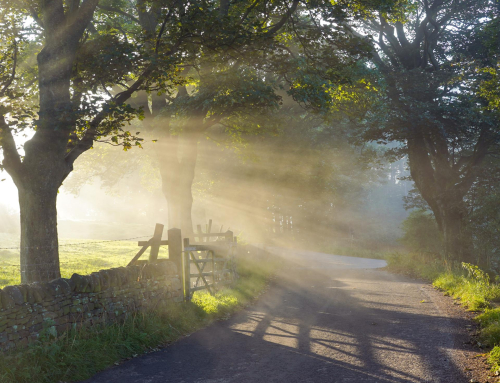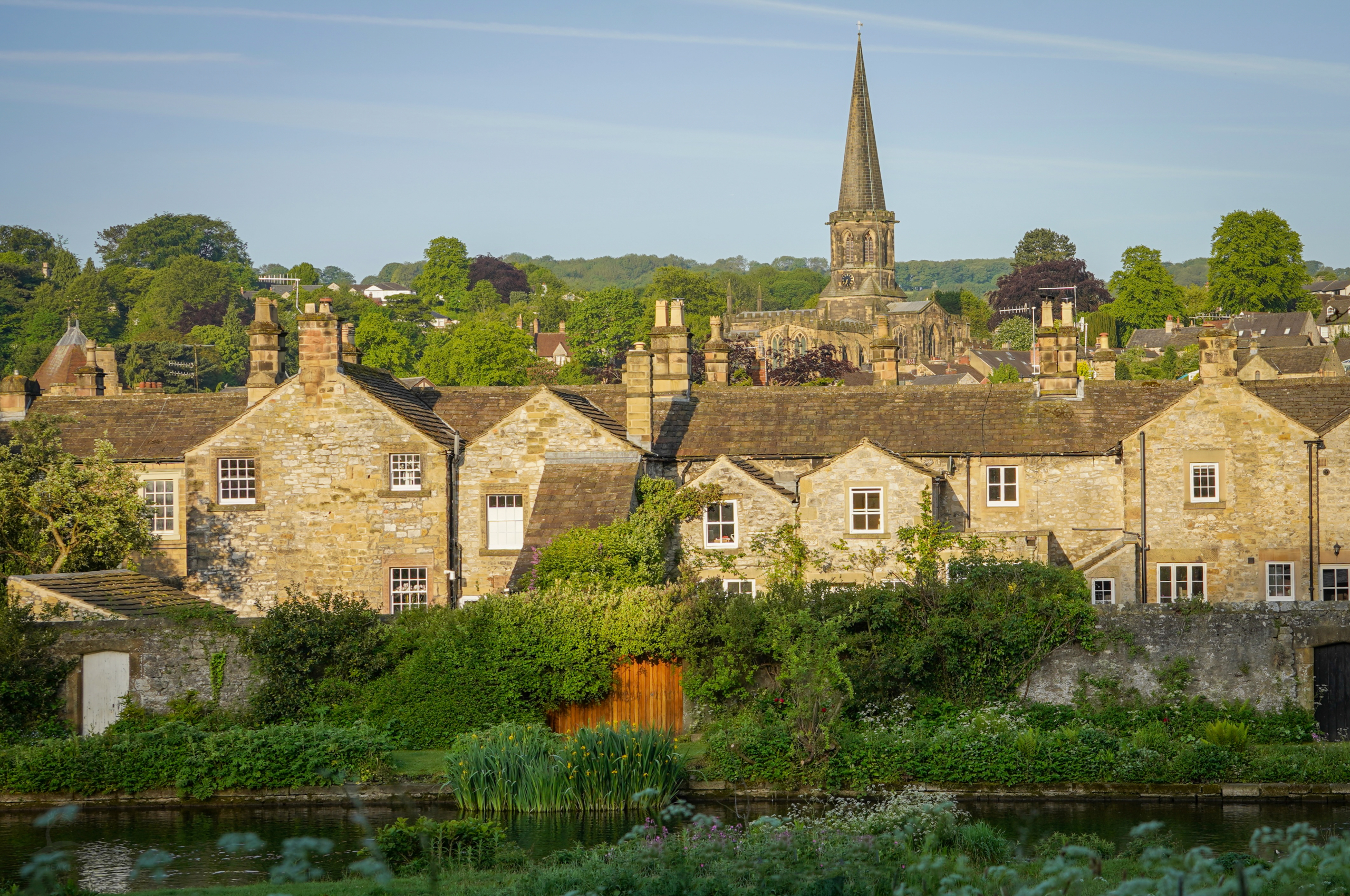
The pretty town of Bakewell, with its beautiful setting on the Derbyshire River Wye, is the only town wholly within the boundary of the Peak District National Park. It’s a relatively small market town with a population of less than 5,000 people, but what it lacks in size it makes up for with its wealth of historic buildings, shops and cafés. It’s a wonderful place to explore, with pretty riverside walks, old stone cottages, narrow lanes and hidden courtyards.
Bakewell is known as the ancient capital of the Peak District, and it has a long and venerable history. The name ‘Beadeca’s Wella’ was first mentioned in 924 in the Anglo Saxon Chronicle, referring to the warm springs in the area. In the Domesday Book of 1086 the name had corrupted to Badequella, bath well, and the town was already quite a large settlement, with a church, a mill, a lead mine and around 200 inhabitants.
Derbyshire River Wye
As you enter Bakewell from the north, make sure you pay suitable attention to the bridge that you drive over, with its five Gothic arches and triangular quoins. It dates from 1300 and is one of the oldest bridges still in use in England.
The Derbyshire River Wye that flows beneath it is clear and clean, home to an abundance of wildlife. Don’t miss a riverside walk to look out for the rainbow trout that swim up to greet visitors!
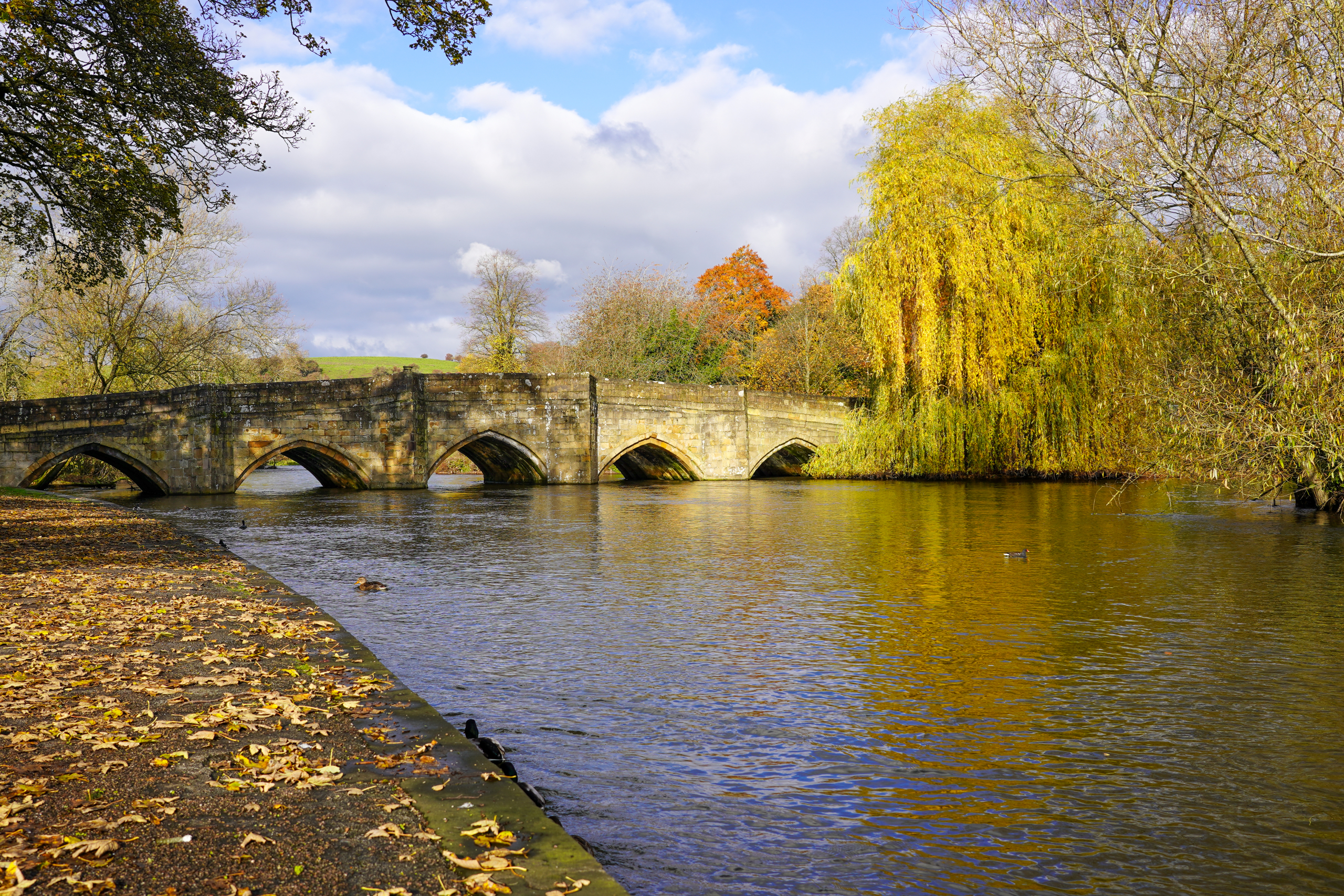
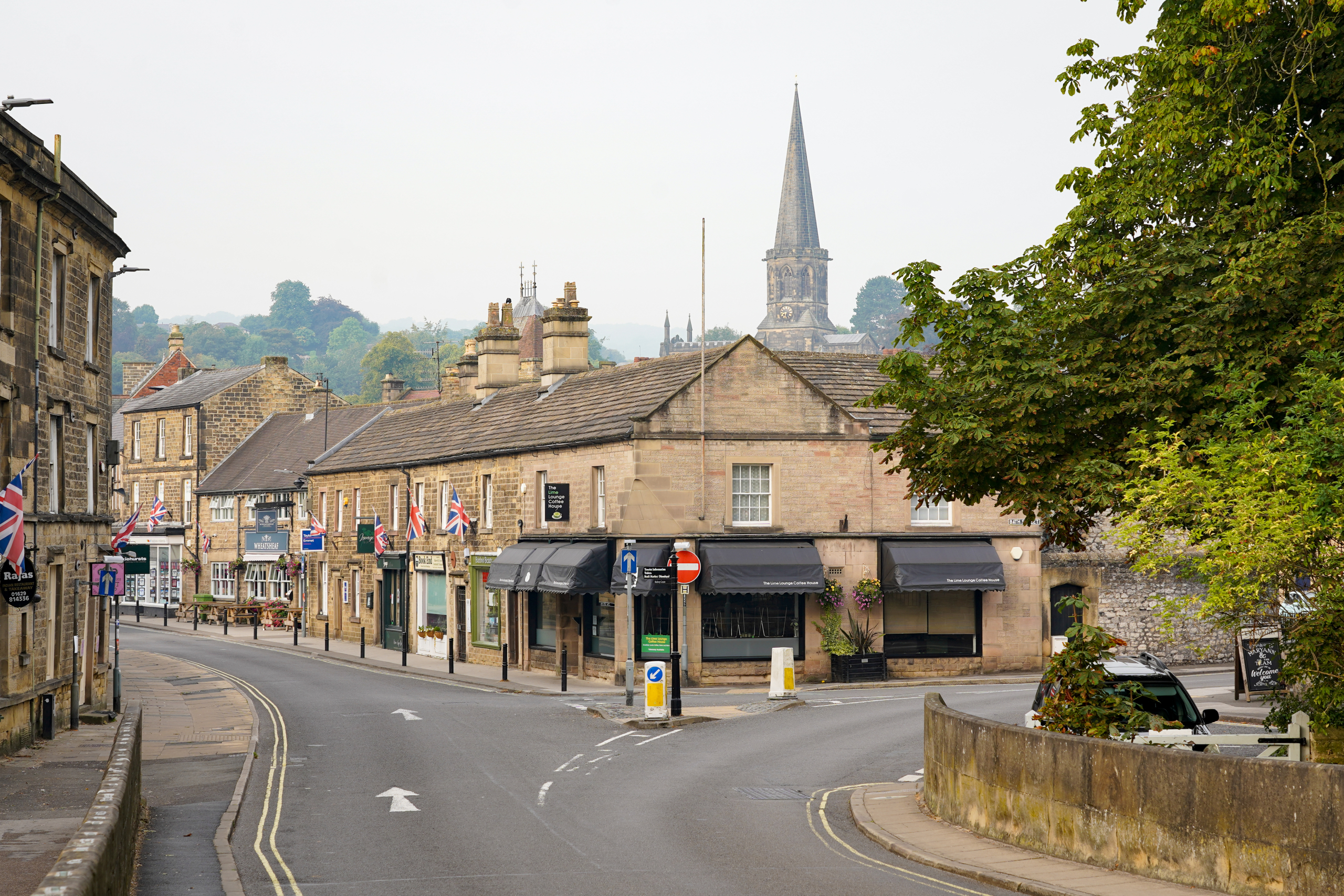
All Saints’ Church
From almost every point in Bakewell you can see the towering spire of All Saints’ Church. There has been a church in this spot since 920 but the existing building dates from 1240.
Inside you’ll find spectacular tombs for members of the Vernon and Manners families, who still live at nearby Haddon Hall, as well as magnificent stained glass windows. The churchyard offers great views across the town.
Bakewell Pudding
Of course, no visit to Bakewell would be complete without sampling its most famous dish, Bakewell Pudding!
Very different to Bakewell Tart, which is the invention of Mr Kipling in a factory in Barnsley, the Bakewell Pudding was created by pure chance in 1860 at a local inn, located where The Rutland Arms now stands, when a cook misunderstood the recipe for a strawberry tart. The story goes that, instead of stirring the egg mixture into the pastry, the cook spread it on top of a layer of jam. Happily everyone loved the resulting dish, however, and it’s still made in the town to this day.
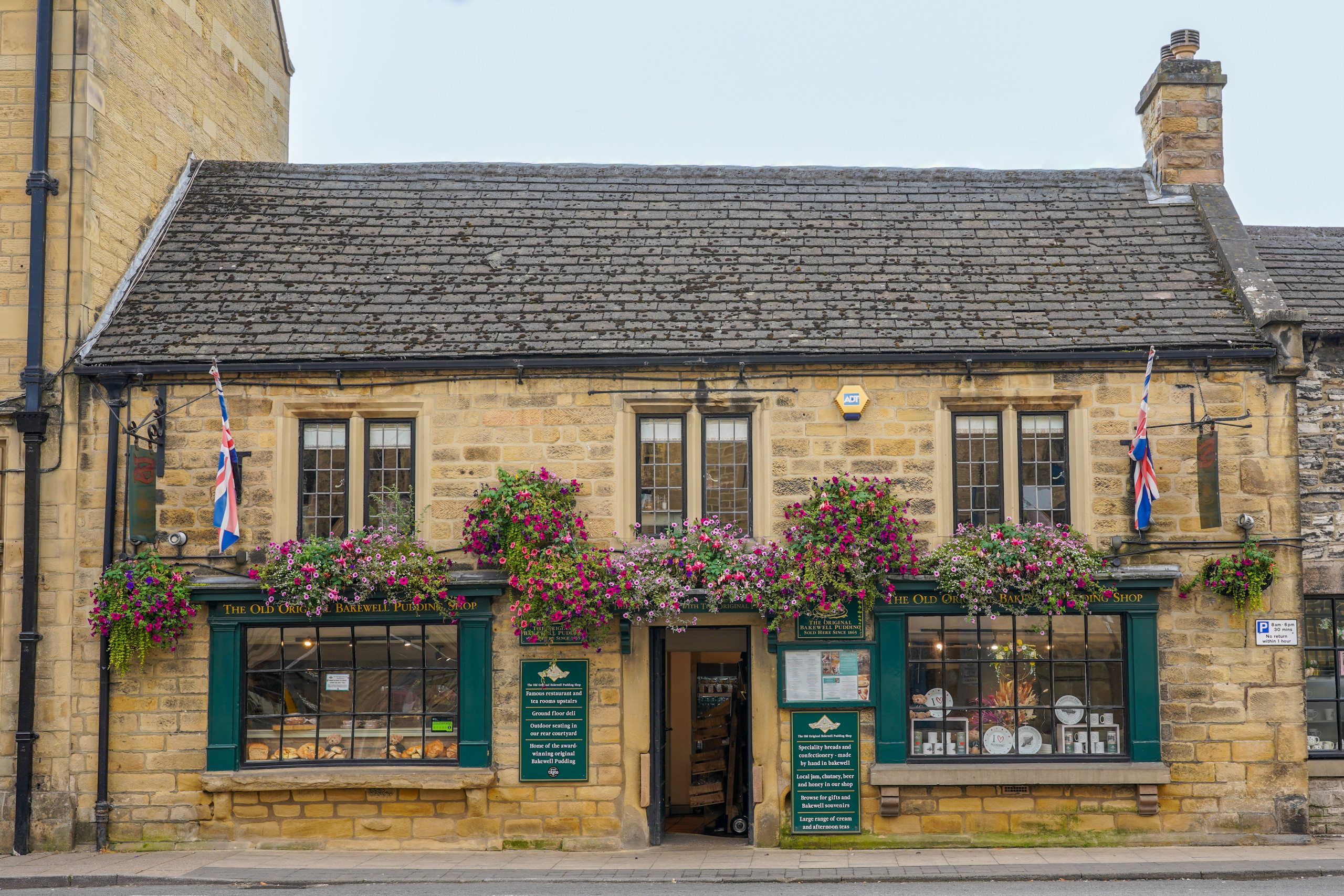
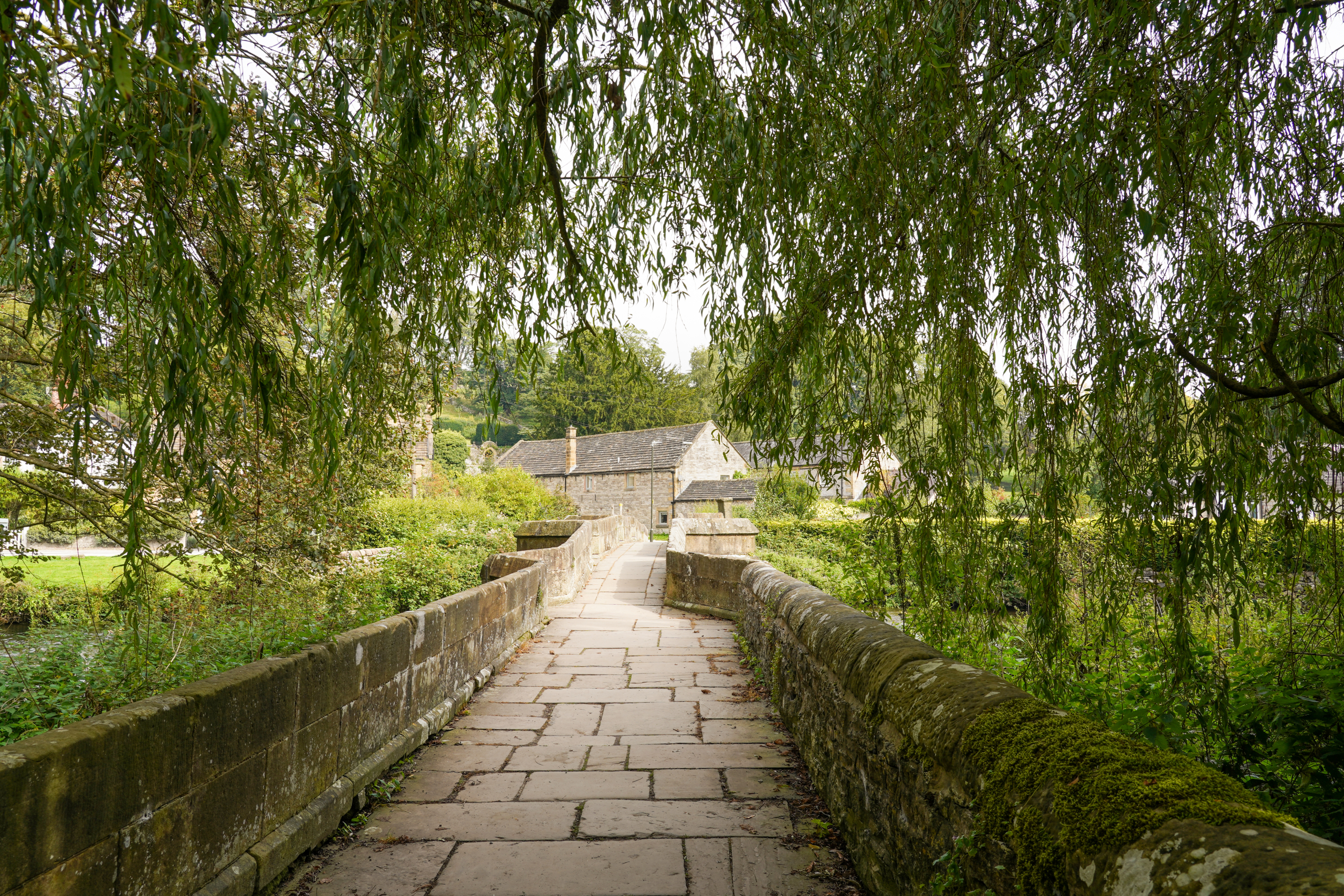
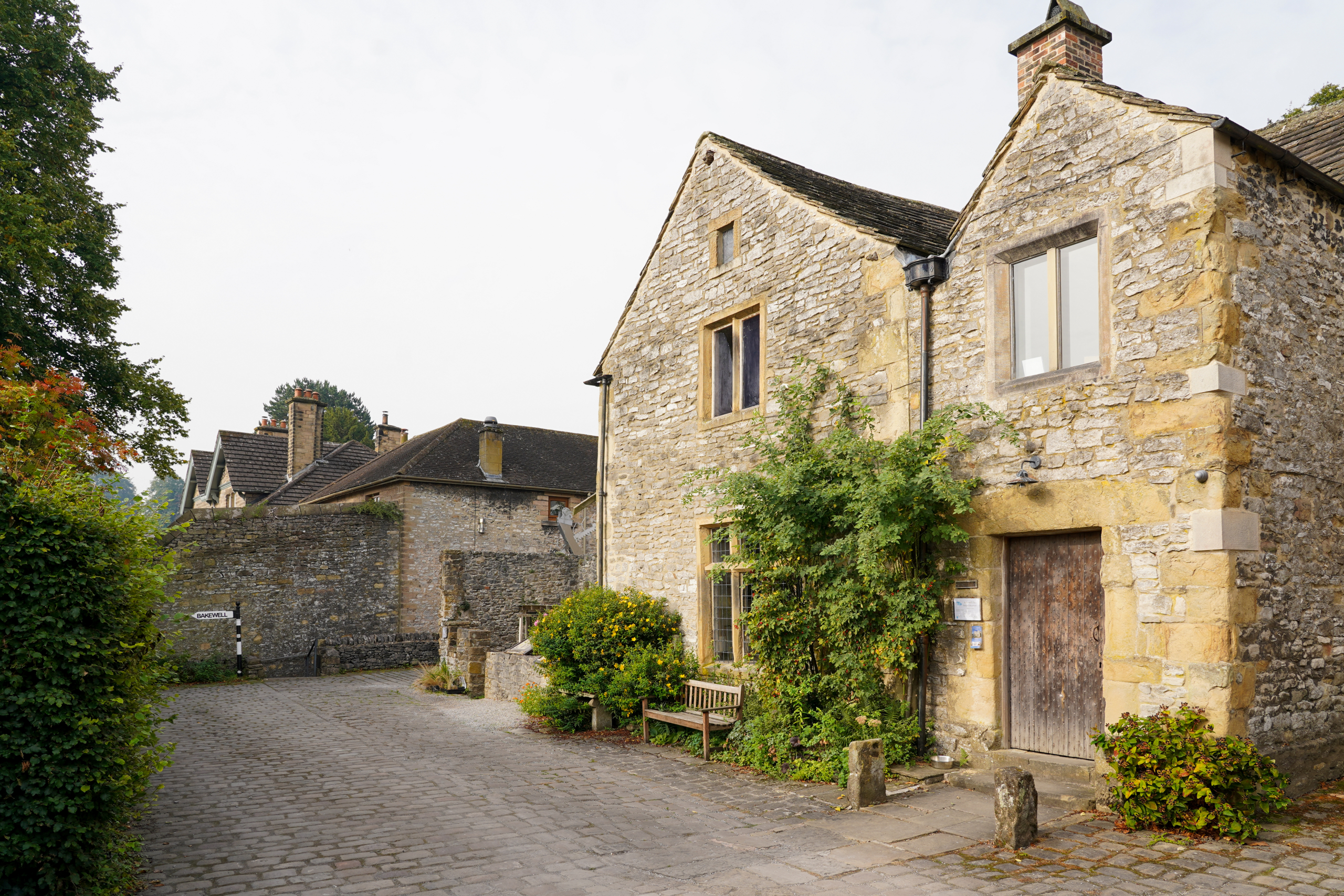
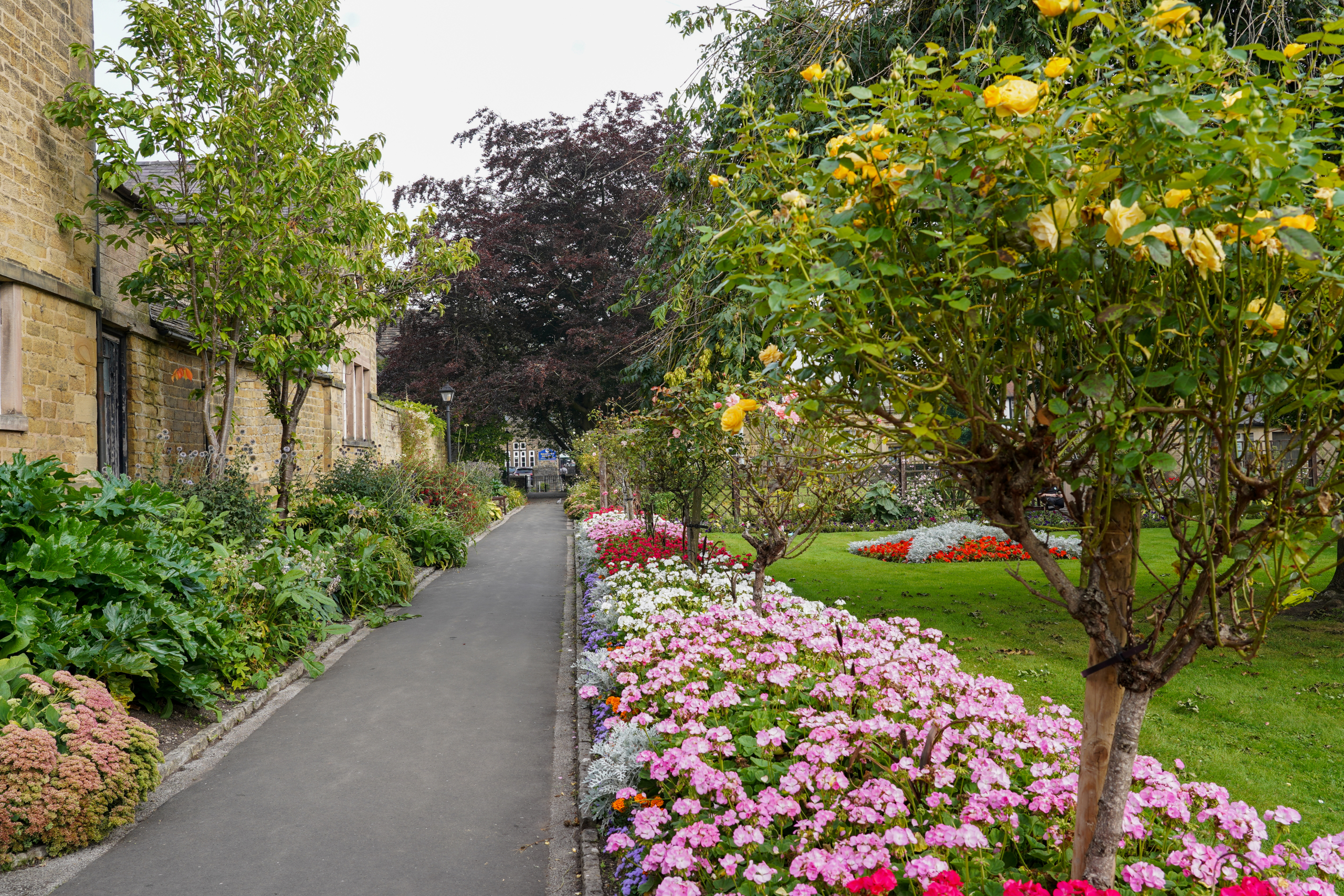
Don’t Miss!
There are many delights to be found by just wandering Bakewell’s streets, but make sure that you take the time to find these hidden gems:
Holme Bridge
Continue walking through Scot’s Garden to the north of the town and you’ll eventually reach a second beautiful bridge over the river, Holme Bridge. Almost a miniature version of the main road bridge into Bakewell, and similarly with five wide arches, this is a packhorse bridge built in 1664. It’s a peaceful spot from which to watch the river flow, and a great location for Poohsticks!
Old House Museum
High on a hill above Bakewell, close to the church, the building that houses the Old House Museum was built in the reign of Henry VIII as a tax collector’s cottage. It was later used by the famous industrialist Sir Richard Arkwright, who housed his mill workers here. The museum’s collections tell the social history of Bakewell and its people.
Bath Gardens
Located right in the heart of Bakewell you’ll find the tranquility of Bath Gardens. They date back to Roman times, when a thermal bath fed by mineral springs was located here, and it remained a popular place to bathe until the 1700s. Now the gardens are filled with spectacular flower beds and a war memorial, as well as plenty of spots to soak up the sun.
Scot’s Garden
Located beneath the bridge as you enter Bakewell from the north, Scot’s Garden is a beautiful area of open land alongside the river. Perfect for escaping from the crowds or for watching the river wildlife, it’s been a little haven for the people of the town since 1381, when it was first recorded as a garden.
Bakewell Walks
Bakewell is a lovely town to stroll around, with plenty of riverside paths and meandering streets, but it’s also a great base for many walks out into the surrounding countryside too. Follow any of the well-marked public footpaths into the lovely nearby villages of Ashford in the Water, Rowsley or Youlgrave.
Bakewell marks the start of the traffic-free Monsal Trail, which continues for 8.5 miles to Chee Dale, following the route of the former Midland Railway line that once connected Manchester to London. The trail offers wonderful views and is perfect for walkers, cyclists, wheelchair-users and horse-riders, taking you via impressive tunnels and over the soaring Headstone Viaduct. There are a number of cafés en route.
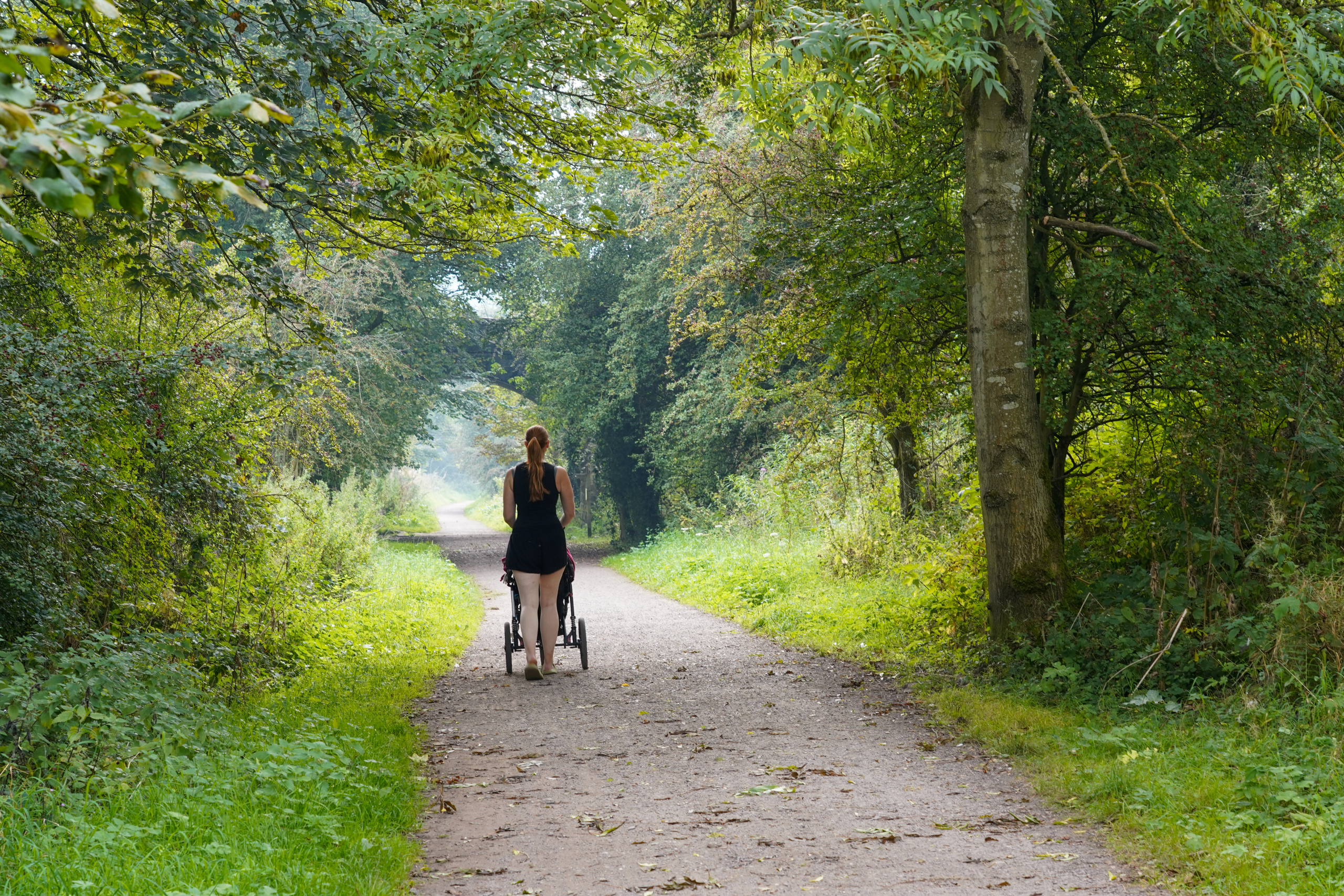

Further Afield
Bakewell is close to many of the Peak District’s most popular visitor attractions, including the grand Chatsworth House and the ancient, spectacular Haddon Hall. Buses are available to both destinations from the centre of Bakewell.
How do I get to Bakewell?
Bakewell is located in Derbyshire, in the centre of the Peak District National Park. It’s situated on the A6 road between Buxton and Derby. The postcode for the Market Place in the centre of Bakewell is DE45 1HA.
Buses are available from Derby, Matlock, Buxton, Chesterfield and Sheffield.
Bakewell doesn’t have a train station; the closest train stations are in Matlock, Chesterfield and Buxton.
All information is correct at the time of publication and to the very best of my knowledge. If you spot any errors or you’d like me to make any amendments, please drop me a line at info@peaklass.com!
All photographs ©Peaklass.


